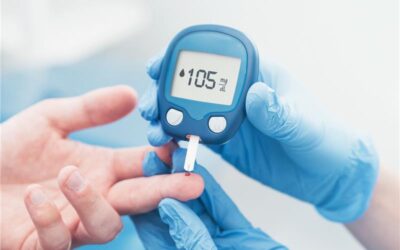Case Study
Metabolomics Identifies Preclinical Biomarker of Acute Renal Injury
The identification of this biomarker would not have been possible without the use of metabolomics analysis.
The findings revealed a practical path forward toward the development of a targeted panel that could be used to screen plasma from mice treated with other related compounds targeting the same indication. This screen allowed researchers to identify a backup compound that did not cause renal toxicity while still achieving target engagement and eliciting a therapeutic effect. These results illustrate that metabolomics is a powerful tool that can deliver actionable insights for toxicity assessment.
WATCH THE VIDEO
The findings revealed a practical path forward toward the development of a targeted panel that could be used to screen plasma from mice treated with other related compounds targeting the same indication. This screen allowed researchers to identify a backup compound that did not cause renal toxicity while still achieving target engagement and eliciting a therapeutic effect. These results illustrate that metabolomics is a powerful tool that can deliver actionable insights for toxicity assessment.

The Challenge: Lack of Translatable Biomarkers
A potent nicotinic acid receptor (NAR) agonist, SCH 900424, was being developed for the treatment of dyslipidemia. Unfortunately, research indicated that it caused rapid onset morbidity and acute renal failure in mice.
To understand the mechanisms behind the toxicity, the Metabolon Global Discovery Panel identified small molecule biomarkers of acute kidney injury (AKI) that could aid in a better understanding of SCH 900424-induced toxicity in mice.1
Plasma and urine samples from mice treated with a range of compound doses were shipped to Metabolon for analysis on the Metabolon Global Discovery Panel which employs a proprietary reference library of 5,400+ compounds to identify endogenous metabolites.
Microbiome-Related Compound Demonstrates Sensitive Response
The results of this metabolomics study identified 3-indoxyl sulfate as a sensitive plasma marker for renal failure. 3-indoxyl sulfate is a microbiome-derived metabolite originating from tryptophan. Bacteria within the gut first convert dietary tryptophan into indole, which is then further metabolized to 3-indoxyl sulfate in the liver and is typically destined for urinary excretion. 3-indoxyl sulfate is a known renal toxin that accumulates in the blood of uremic animals or in patients with chronic renal failure.
Mechanistically, 3-indoxyl sulfate is thought to promote renal failure by damaging tubular cells through modulation of OAT1 and OAT3 transporters, which are expressed on the basal lateral membrane of the proximal and distal tubules. 3-indoxyl sulfate was shown here to be a more sensitive marker of kidney toxicity than other established renal response markers, including creatinine, urea, and p-cresol sulfate.
The Outcome: Using Metabolomics to Deliver Actionable Insights for Assessing Toxicity
Metabolomics data revealed high plasma levels of 3-indoxyl sulfate with acute renal failure; the validity and translatability of this marker was supported by 3-indoxyl sulfate’s known role as a uremic toxin in humans. More importantly, the findings revealed a practical path forward toward the development of a targeted panel that could be used to screen plasma from mice treated with other related compounds targeting the same indication. This screen allowed researchers to identify a backup compound that did not cause renal toxicity while still achieving target engagement and eliciting a therapeutic effect. These results illustrate that metabolomics is a powerful tool that can deliver actionable insights for toxicity assessment.
Metabolon helped researchers to:
- Obtain actionable insights with respect to the mechanism of compound-induced toxicity including the identification of a metabolite biomarker of renal failure
- Develop a targeted panel used to screen backup compounds
- Identify compounds directed against the same target that did not cause renal toxicity
The identification of this biomarker would not have been possible without the use of metabolomics analysis. In addition, Metabolon’s state-of-the-art technology played a crucial role in helping the researchers identify this potential marker of toxicity.
References
1. Zgoda-Pols JR, Chowdhury S, Wirth M, Milburn MV, Alexander DC, Alton KB. Metabolomics analysis reveals elevation of 3-indoxyl sulfate in plasma and brain during chemically-induced acute kidney injury in mice: investigation of nicotinic acid receptor agonists. Toxicol Appl Pharmacol. 2011;255(1):48-56. doi:10.1016/j.taap.2011.05.015






